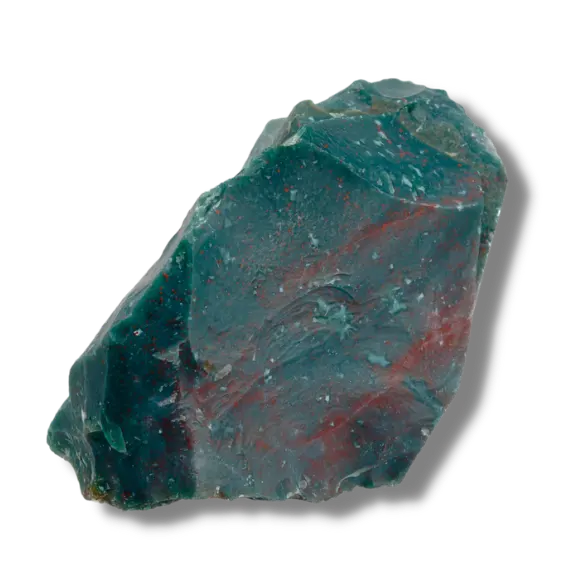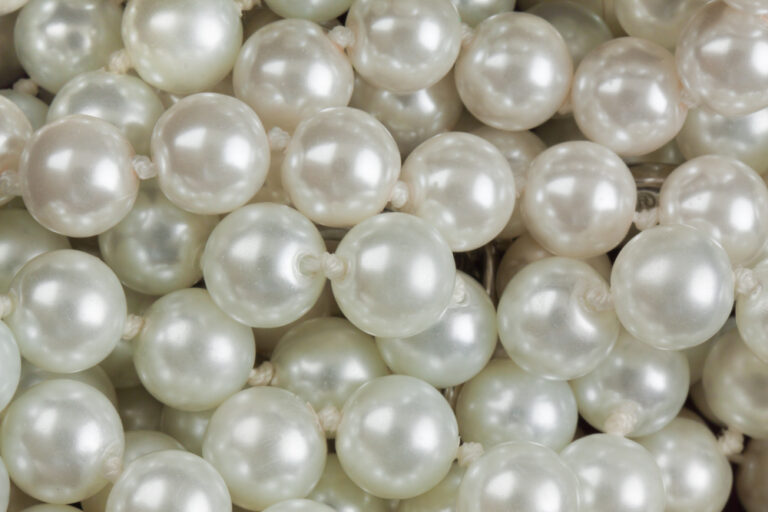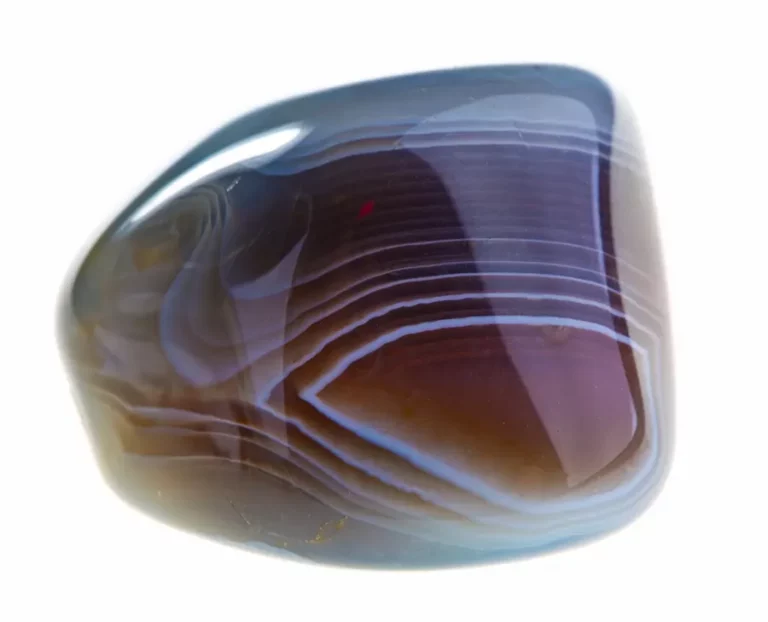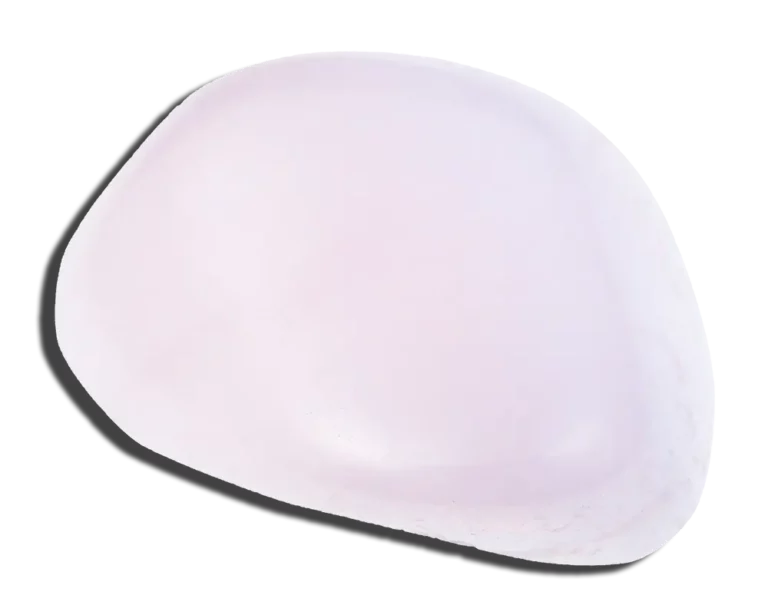Jade Stone: Properties, Benefits & Meanings

Jade Stone Overview
Jade stone is a beautiful green-colored gemstone that can be fashioned into jewelry or carved for ornamental objects. It is very popular among history enthusiasts and geology experts because of its rich history and unique properties.
The Jade stone was very prevalent in ancient society and held great meaning to different cultures. This article will talk about the properties, meanings, and uses of Jade stone.
What Is Jade Stone
Jade stone is an ornamental mineral that comes in various colors, including green. It has a long history as a prized decorative stone. It has been used for ornamental purposes and rituals since antiquity in various cultures and traditions. Recently, it has been used for some industrial purposes as well.
Jade is a rare stone that symbolizes good luck and prosperity in Chinese culture. It is related to the Heart chakra and holds great historical value. Over the years, many artifacts made from jade have been uncovered in various Chinese provinces.
Etymology Of Jade stone
The English word jade was derived from the Spanish term piedra de ijada, which referred to a type of stone thought to heal ailments in the kidneys and loins.
Nephrite is a variety of jade that comes from the Latin “lapis nephriticus,” meaning “stone of the kidneys.”
Jade stone Appearance
In gemology, jade relates to two minerals: nephrite jade (tough and hard) or jadeite (fine-grained). The term “jade” is used as a description of both—though their properties differ.
Jadeite usually comes in white and pale green, while Nephrite’s color ranges from light gray to dark green (or even black). Nephrite also has a higher magnesium concentration as opposed to Jadeite.
The most prized semitransparent Jade is called “Imperial Jade” because of its even, vivid green color. Lavender is the second most valued color.
Where Is It Found?
Jade stone is found in many countries worldwide, including:

Physical Characteristics
| Mineral Group | Jade Group |
| Color | Green |
| Hardness (Mohs scale) | 6 – 7 |
| Refractive Index | 1.600 – 1.688 |
| Fracture | Splintery |
| Specific Gravity | 2.90 – 3.38 |
| Transparency | Translucent, Opaque |

How To Tell If It Is Real?
To determine if your Jade stone is genuine, have it tested by a qualified gemologist. If you’re unsure about the stone’s authenticity, ask an expert for their opinion before purchasing it. Some tips, though, are mentioned below:
- Color Consistency: Jade stone should be different in its color. It may be fake if you notice that the stone has discolored spots or streaks. Jade stone is never one single color. You can also use the naked eye test by comparing the stone with other Jade stone. It could be fake if your stone is monotone or the colors seem synthetic.
- Transparency: The Jade Stone should be opaque or milky translucent. It might be fake if the Jade Stone has a vitreous luster or is transparent.
- Acetone Test: Dip the stone into acetone, a solvent that dissolves most paints but doesn’t damage genuine gemstones. If the stone has been artificially colored, it will release that color into the solution. If it is not dyed, the rock will remain unchanged.
- Hardness: Jade Stone is harder than other popular stones. Jade Stone has a hardness of 7 on the Mohs scale, which measures the relative hardness of minerals based on their ability to scratch other materials. The Mohs scale determines how easily another can scratch one material.
Before purchasing Jade stone online, ensure that the seller has an excellent reputation and offers you a refund if the stone doesn’t match your expectations by prior email correspondence.
Value And Cost
Most natural gemstones are valued based on four factors:
- Their size.
- Color.
- Clarity (the absence or presence of inclusions).
- The cut at which facets are “set” to reflect light.
Jade stones tones are expensive and valuable, with the highest quality stones selling for hundreds of thousands of dollars. The most valuable Jade stone is a translucent, pure green color with no visible inclusions or flaws.
Color
Color is the most important factor in determining value. The color of the Jade stone affects its price. The more vibrant and intense the shade, the higher value it has. Also, certain shades are rarer than others, affecting overall value. For example, Light greens are more occasional and, therefore, more expensive than dark ones. Rare Jade stone like Olmec Blue, Maya Black, and Chloromelanite are also incredibly expensive due to their rarity. White Jade and yellow jades are quite common and low value on the other hand.
Cut
The cut is the way a gemstone has been shaped and polished. The quality of the cut affects the brilliance, luster, and fire of a stone. A well-cut Jade stone should have clean facets that reflect light through the stone like mirrors.
Size
The size of a gemstone is the most critical factor in determining its value. Larger gems are rarer, more valuable, and more desirable than smaller ones. For example, a one-carat Jade stone is usually more costly than a half-carat one because fewer are available at any given time, and they take longer to find.
Clarity
Clarity refers to the number and size of inclusions or imperfections in a gemstone. The fewer inclusions there are, the greater the clarity. Therefore, a stone with high clarity will have few visible inclusions when viewed under magnification, whereas those with low clarity may look cloudy or foggy.
Chakra Connection
What chakra does Jade Stone represent?
Jade stone is associated with the heart chakra. It promotes self-love, compassion, and acceptance. Jade can help you to connect to your inner child, allowing you to understand what makes them happy and content in life. Jade stone has been used for centuries by healers as a tool for opening up clogged energy centers that prevent one from experiencing joy.
Meaning And Uses
Some uses of jade stone are mentioned below.
Jewelry and Ornaments
Jade is a very popular gemstone that is used in making jewelry and ornaments. It’s common to find jade rings, necklaces, earrings, bracelets and pins when shopping for this stone. It can be cut into cabochons or beads to make beautiful pendants.
It’s also used to make jadeite eggs, which are considered very powerful for healing and protection. The Chinese have been using jadeite in their jewelry for centuries, as it is said that wearing this gemstone brings health and prosperity. The use of Jade stone for carvings is also quite popular.
Love and compassion
Love and compassion are two of the most important virtues in life. Jade, as it is known to be an aphrodisiac, has a powerful effect on love and compassion. It’s said that jade can help bring peace between lovers and improve their relationship.
This stone will help you open your heart chakra and connect with others on a deeper level. It also enables you to forgive yourself and others, making it easier for you to move forward in life .
Cleansing
Jade Stone is very good in cleansing, cleansing the body and mind, protecting the wearer from disease and illness. Jade also enhances intelligence and creativity, improves memory and concentration. It will protect a person from negative energy and ghosts. The jade stone is believed to bring prosperity and wealth to whoever wears it.
This stone is an excellent gift for those who are suffering from depression and anxiety. It will also help you to overcome any kind of stress, including physical and mental stress. It may also be used by pregnant women as it protects the unborn child from negative energies.
Good luck and Prosperity
Jade is said to bring good fortune and prosperity. This stone is often used in the form of an amulet that is worn around the neck. It can also be placed in your home or workplace to attract good fortune and abundance. It is believed that wearing jade will improve one’s health, as well as bring good luck and prosperity.
Jade is a rare stone, which makes it something that people will be drawn to. It’s also considered to be a symbol of wealth and power, so it’s no wonder that many cultures have worn jade for thousands of years.
Meditation and Healing
Jade is a wonderful stone to use when meditating. It helps you to feel more centered and calm. Jade can help clear your mind of distractions and allow you to focus on the task at hand. It also promotes creativity and imagination. It has a grounding effect on the person during prayers and rituals.
Jade is a stone that promotes healing on many levels. It is said to be able to heal emotional wounds, increase self-esteem and promote feelings of calmness. Jade can help you connect with your higher self while also helping you discern truth from falsehood. It has a long history for being used in feng shui practices.
Protection
Jade is a stone of spiritual energy, a protector against negative energy. It allows one to see what truly is without distortion or deceit. Jade is also one of the most protective stones, and can be used as a talisman in many forms: on the body (as in jewelry), in the environment (e.g., in the form of an elixir or incense), or by the mind (by meditating upon its qualities).

How to clean Jade Stone Jewelry?
Jade stone is durable and can be cleaned with warm soapy water and a soft cloth. Avoid using ultrasonics or steamers as these may cause damage to the stone’s surface. If you want to clean your Jade jewelry at home, take the following steps:
- Wipe the jewelry with a microfiber cloth and warm water, just as you would for any other piece of jewelry.
- If your Jade stone Jewelry has been worn frequently or is dirty from everyday wear, you can use mild dish soap to clean it. Make sure that the soap does not contain bleach!
- Rub some alcohol onto a soft cloth and use this to clean the surface of the gemstone—this will keep it looking shiny!
- Cleanse it using burning sage to remove any negativity absorbed, which can negatively impact the surroundings.
- There are various ways to recharge your amulet, including immersing it in moonlight or burying it underground.
It’s essential to cleanse the Jade stone before using it—the process keeps you energized and helps keep negative energies at bay.
Jade stone should not be exposed to household chemicals or heat, damaging it or changing its color.
FAQ
Which Gemstones Go Best With Jade stone?
The best gemstone to wear with Jade stone is Turquoise. The energy of Turquoise will balance the energy of Jade stone, calming it down and making it less aggressive. You can also pair Jade with Red Coral, which will encourage creativity and self-expression.
Jade stone is a wonderful gemstone to wear in combination with other stones. It’s beautiful when paired with Citrine, Rose quartz, Red Coral or Garnet. You can also pair Red Jade stone with Quartz, Kunzite, or Amethyst for spiritual protection and healing.
How Can This Stone Be Worn?
Jade stone is a beautiful piece of jewelry that can be worn as a bracelet or an anklet. It’s also commonly used in necklaces, earrings and rings. You can find many different types of Jade stone jewelry online or at your local jeweler.
Jade stone can be worn in combination with other gemstones. It’s beautiful when paired with Citrine and Red Coral, which will encourage creativity and self-expression. Jade stone is also an excellent stone to wear in combination with Quartz or Amethyst for spiritual protection and healing.
What are the healing properties of Jade stone?
Jade stone is said to be a powerful healing crystal that can help you manage stress, relieve anxiety, and improve your sleep. It’s also excellent for improving your self-esteem and promoting positive thinking.
People believe that Jade stone can help you connect with your spirit guides and guardian angels, increasing your psychic abilities. It’s also an excellent stone for helping you find balance in your life.
What is Jade vs. Jadeite?
The only difference between jade and Jadeite is quality. Jade exists in two varieties which are Nephrite and Jadeite. Jadeite is considered a high-quality jade and is rarer and more expensive than Nephrite.
What is the rarest color of Jade?
Green stones and lavender hues are the most well-known, while its blue variety is considered rarest. Most deposits consist primarily of gem-quality Jadeite—in Myanmar, Japan, and Guatemala.







